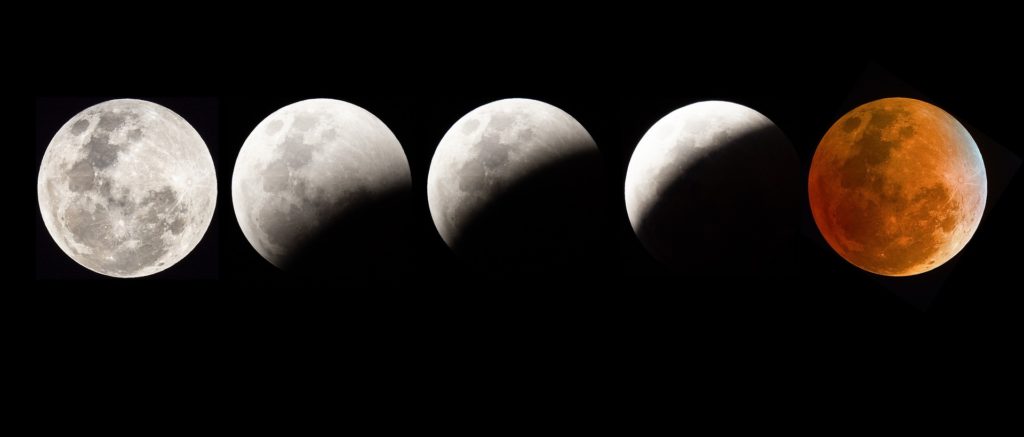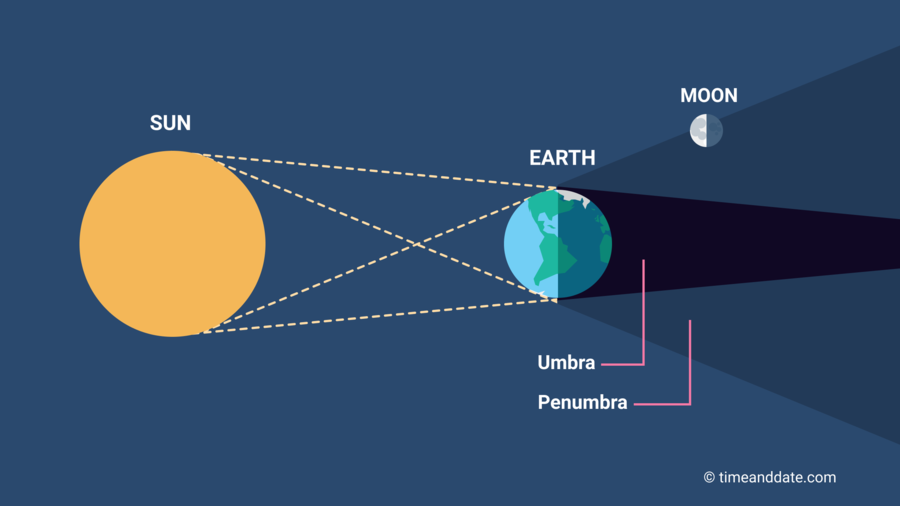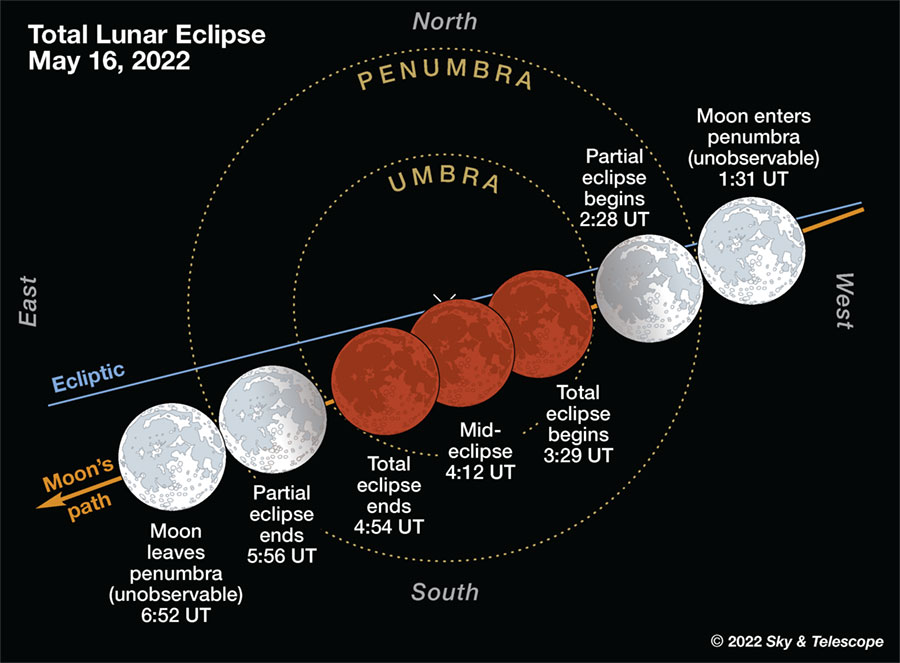
By Claire Gibson, Lowell Educator
May 15, 2022 8:29 pm– This year’s first total lunar eclipse will sweep across the Americas, Europe, and Africa. Mark your calendars for the longest lasting totality until 2029 with the May’s “Blood Flower Moon” lunar eclipse. Although the name sounds eerie for May, it is just a trick of the light!
What is a lunar eclipse?
A lunar eclipse occurs only during a full moon, when the Moon passes into Earth’s shadow opposite the Sun. Usually during a full moon, the surface of the Moon facing Earth is fully illuminated by the Sun, causing it to reflect whitish-gray light back to Earth. This is because the Moon orbits the Earth at a slightly different plane than the Earth orbiting the Sun. However, at certain times, the Moon orbits at the same plane as Earth, causing their paths to coincide. The Moon will descend into the shadow of Earth where sunlight is cut off, causing the surface to darken.

The Earth has different parts to its shadow: the penumbra and the umbra. “Umbra” means shadow in latin. The penumbra is a partial shadow, where some of the light from the Sun is blocked. The umbra is the center and darkest part of the shadow, where light is totally blocked out. During a lunar eclipse, the Moon passes through part or all of these shadows from Earth.
There are three types of lunar eclipses: penumbral, partial, and total eclipse. The May 15-16th event will be a total lunar eclipse, where all of the Moon’s surface descends into the shadow of Earth, and a spectacular view occurs. At the same time that the Moon is in Earth’s shadow, a little bit of light from Earth’s sunrises and sunsets, or the disk of Earth, descends onto the surface of the Moon. When this happens, the light waves become stretched out and appear red, also making the surface of the Moon a red color! This is where the “Blood Moon” comes from. “Flower Moon” is the name given to the full moon in the month of May.
What are the stages of a total lunar eclipse?
A total lunar eclipse can be tracked in stages of when the Moon enters certain parts of Earth’s shadow. The main stages of a lunar eclipse are when the Moon enters the penumbra, umbra, and totality of the eclipse.
Stages of a lunar eclipse:
- Moon enters the penumbra: When the Moon makes first contact with the partial shadow of Earth.
- Moon enters the umbra: When the Moon makes first contact with the full shadow of Earth, and a partial eclipse is visible.
- Middle of the eclipse: When the center of the Moon is closest to the center of Earth’s umbra.
- Total eclipse begins: When the Moon is fully immersed in the Earth’s umbra.
- Total eclipse ends: When the Moon is no longer fully immersed in the umbra, but a partial eclipse is still visible.
- Moon leaves the umbra: When the Moon is no longer in contact with the full shadow of Earth.
- Moon leaves the penumbra: The Moon is no longer in contact with Earth’s partial shadow and the lunar eclipse ends.

What can astronomers learn during a lunar eclipse?
Not only are total lunar eclipses a phenomenal view in the night sky, but they also allow for valuable observations about our solar system. Astronomers and planetary scientists have been able to learn more about the surface properties and evolution of the material on the Moon during a lunar eclipse. This is achieved by using thermal measurements of the Moon. As the Moon goes through its regular orbit around Earth, the surface is subjected to gradual heating and cooling due to sunlight hitting the surface. When a lunar eclipse occurs, this shift from hot to cold accelerates as the Moon passes into Earth’s shadow. Scientists can watch the change in temperature over time to determine the properties of materials on the surface of the Moon, in this case the top-most layer of regolith (the dusty and loose rocky material covering the bedrock of the Moon). Lunar eclipses offer a chance to view the thermal properties of the moon in a new and accelerated light!
In the past, lunar eclipses were used by the ancient Greeks to determine the lunar diameter. This can be done with the simple assumption that Earth’s shadow as it falls on the Moon is the same size as Earth. Observers can track the motion of the Moon through Earth’s shadow and use the diameter of Earth to determine the size of the Moon!
How can you watch the eclipse?
If you live in North and South America, Africa, or Western Europe, you can view this spectacular event of the night sky. But no matter where you are in the world, you can watch Lowell Observatory’s Total Lunar Eclipse Livestream on May 15, 7:15 PM PDT. Learn about the science of lunar eclipses with Lowell educators, and get a live view of the eclipse from Lowell Observatory from Moonrise to Midnight.
But that’s not all! Lowell Observatory will also be hosting a lunar eclipse party from May 15 @ 5:00 pm – May 16 @ 12:00 am. Join us for access to spectacular viewing of the eclipse through state of the art telescopes, special science talks, food trucks, performances, and more!